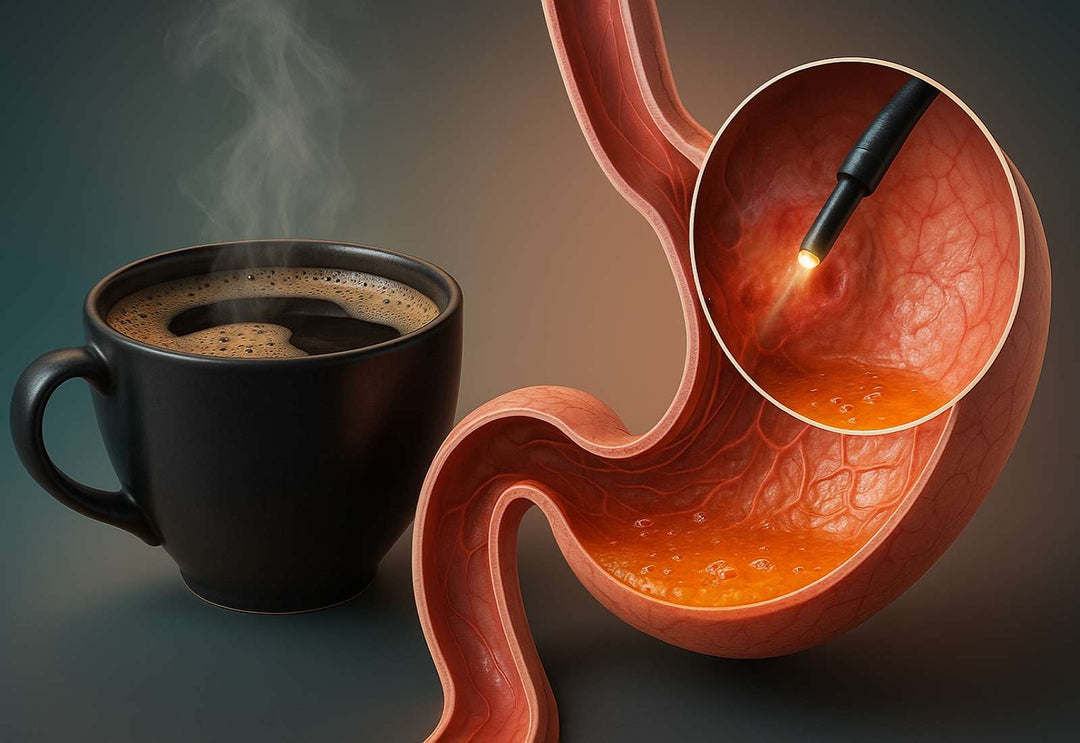Understanding the SCA Cupping Test
Introduction

Are you passionate about coffee and eager to take your knowledge to the next level? Well, look no further than the SCA Cupping Test. Whether you're a coffee connoisseur or a professional in the coffee industry, understanding this test is essential if you take your coffee as serious as we do at General Warfield's Coffee. In this comprehensive guide, we'll delve deep into the world of cupping and break down the Specialty Coffee Association (SCA) Cupping Test.
Throughout this guide, we will explain the various steps involved in the SCA Cupping Test, offer valuable tips on how to develop your sensory skills, and help you grasp the significance of the scoring system. Whether you're gearing up for a career in the coffee industry or simply seeking to elevate your personal coffee tasting experience, this ultimate guide will equip you with the knowledge and skills you need to become a cupping expert.
What is the SCA Cupping Test?
The SCA Cupping Test stands as a globally recognized standard for evaluating the quality and flavor profile of coffee. It involves meticulously assessing the aroma, taste, acidity, body, and overall balance of multiple coffee samples. By mastering this test, you will be able to discern subtle nuances in flavor and identify the characteristics that set exceptional coffee apart.The Importance of the SCA Cupping Test in the Coffee Industry
The importance of the SCA Cupping Test in the coffee industry cannot be overstated. It serves as a benchmark for coffee quality and aids professionals in the industry in making informed decisions about sourcing, roasting, and brewing. Additionally, the SCA Cupping Test provides consumers with transparency and assurance that they are getting the highest quality coffee.History and Development of the SCA Cupping Test

The SCA Cupping Test has its origins in the cupping practices of coffee professionals who sought a standardized method for evaluating coffee quality. In the early 2000s, the Specialty Coffee Association (SCA) recognized the need for a unified cupping protocol and subsequently developed the SCA Cupping Test.
Over the years, the SCA Cupping Test has evolved and refined, incorporating feedback from industry experts and leveraging advancements in sensory evaluation. Today, it stands as the gold standard for cupping and is employed by professionals worldwide to assess the quality and characteristics of coffee.
Evaluation Process of the SCA Cupping Test
The sensory evaluation process in the SCA Cupping Test is a meticulous and systematic approach to evaluating coffee. It comprises multiple steps that enable highly skilled and trained cuppers (often referred to as Q-graders). These Cuppers assess the various attributes of coffee, including aroma, taste, acidity, body, and balance.
Cuppers initiate the process by evaluating the fragrance of dry coffee grounds, followed by the aroma of the coffee after hot water is added. This step aids in identifying the aromatic qualities of the coffee and provides insights into its potential flavor profile. Subsequently, the coffee is tasted and evaluated for acidity, body, and overall balance. Cuppers also pay close attention to the flavors present, the intensity of acidity (brightness or sourness), the texture of the coffee, and the overall harmony of the cup.
The graders evaluate five (5) cups of the same roast/sample and assign a score of 0-10 for each cup. Each cup tested will cool and the graders continue to assign a score based on the expected changes of fragrance/aroma, flavor, aftertaste, acidity, body, balance, sweetness, uniformity, and cleanliness. A score for each cup is assigned during each cooling period. Scores are given in quarter increments (i.e. 9.25, 9.5, 9.75...) as follows:Individual Quality Assessment per Cup
| Quality Scale | 6.00+ - Good | 7.00+ - Very Good | 8.00+ - Excellent | 9.00+ - Outstanding |
|---|---|---|---|---|
| Score | 6.25 | 7.25 | 8.25 | 9.25 |
| Score | 6.5 | 7.5 | 8.5 | 9.5 |
| Score | 6.75 | 7.75 | 8.75 | 9.75 |
Table 1. Slide on mobile to see entire table >
What Sensory Components Are Used in the SCA Grading Process?
1. Evaluate Fragrance/Aroma - assess the aromatic impressions of dry ground coffee, then with hot water poured over.
2. Evaluate Flavor - determine the "intensity, quality, and complexity of its combined taste and aroma" by slurping to engage the entire olfactory system.
3. Evaluate Aftertaste - consider the length and time the desirable aftertaste lasts.
4. Evaluate Acidity - assess the sweetness and liveliness/brightness of the coffee. Described as "brightness" when desirable, and "sour" when unfavorable.
5. Evaluate Body - assess the physical feeling of the liquid in the mouth, much like distinguishing between skim milk and whole milk.
6. Evaluate Balance - consider how flavor, aftertaste, acidity, and body work together to either complement or contrast one another.
7. Evaluate Sweetness - look for desirable fullness of flavor as well as any indication of obvious sweetness.
8. Evaluate Clean Cup - assess the lack of undesirable taste and/or aromatic characteristics from the first sip to the final aftertaste.
9. Evaluate Uniformity - evaluate the consistency of flavor between five cups tested per roast.
10. Overall Evaluation - provide an overall assessment, considering all categories.
11. Evaluate Defects - identify taint (minor off-flavor) or fault (overwhelming off-flavor).
What Factors Affect the Results of the SCA Cupping Test?

Several factors can influence the results of the SCA Cupping Test. The quality of the coffee beans, the roast level, the brewing method, and even the cupping environment can all impact the sensory experience and the final evaluation. It is important for cuppers to be mindful of these factors and take them into consideration when interpreting the results.
For example, the freshness of the coffee beans plays a pivotal role in the cupping process. Freshly roasted and ground coffee will exhibit more pronounced flavors and aromas compared to coffee that has been sitting for a while. Similarly, the water used for cupping should be of high quality and free from any off-flavors or impurities that could affect the taste of the coffee.How to Prepare for the SCA Cupping Test
Preparation for the SCA Cupping Test requires practice and the honing of sensory skills. Cuppers can start by acquainting themselves with the SCA cupping protocols and guidelines. It is also crucial to taste a wide variety of coffees from different regions, processing methods, and roast levels to develop a well-rounded palate.
Regular cupping sessions with experienced cuppers and participation in cupping competitions can also enhance sensory skills and provide valuable feedback. Additionally, maintaining a cupping journal to record observations and flavor profiles can assist in identifying patterns and cultivating a deeper understanding of coffee.
Fun Exercise: A Step-by-step Guide to Conducting Your Own Cupping Test:
Conducting your own Cupping Test entails a series of steps to ensure consistency and accuracy in the evaluation process. Here is a step-by-step guide to help you conduct a successful cupping session that you can use:1. Gather the necessary equipment: This includes coffee cups, cupping spoons, hot water, scales, and a cupping form.
2. Weigh and grind the coffee: Measure the appropriate amount of coffee for each cup and grind it to a consistent particle size.
3. Smell the dry coffee grounds: Take a moment to inhale the fragrance of the dry coffee grounds and note any distinct aromas.
4. Add hot water: Pour hot water over the coffee grounds, ensuring the appropriate coffee-to-water ratio.
5. Break the crust: After allowing the coffee to steep, gently break the crust that forms on the surface and inhale the aroma.
6. Begin the tasting: Using cupping spoons, slurp the coffee to aerate it and distribute it across your palate.
7. Evaluate the coffee: Assess the aroma, taste, acidity, body, and balance of the coffee, noting any specific flavors or characteristics.
8. Rinse and repeat: Between each cup (use 5 cups), rinse the spoon and palate with water to ensure a clean tasting experience.
How to Interpret the Results of the SCA Cupping Test
Interpreting the results of the SCA Cupping Test involves comprehending the scoring system and analyzing the sensory attributes of the coffee. The SCA Cupping Form offers a structured framework for evaluating different aspects of the coffee, assigning scores based on predetermined criteria. Theoretically, the overall score of a coffee is based on a scale from 0-100 (100 being the highest). Interestingly, no coffee has ever achieved a final score of 100.
The scores given for aroma, taste, acidity, body, and balance provide a comprehensive overview of the coffee's quality and flavor profile. Comparing the scores of different coffees can help identify strengths and weaknesses, facilitating informed decisions when selecting coffee for specific purposes.
The Final Score is determined by the sum of the scores assigned for each of the five (5) cups as previously discussed minus any defects. A brief summary of the sensory components and criteria evaluated are as follows:
- Fragrance/Aroma
- Flavor, Aftertaste, Acidity, Body, and Balance
- Sweetness, Uniformity, and Cleanliness
- Scoring each of the five cups (as the coffee cools for each cup), then summing the total of all five cups tested minus any defects.
| Score Range | Rating | Specialty |
|---|---|---|
| 90-100 | Outstanding | Specialty |
| 85-89.99 | Excellent | Specialty |
| 80-84.99 | Very Good | Specialty |
| < 80.0 | Below Specialty Quality | Not Specialty |
Common Mistakes to Avoid in the SCA Cupping Test
While conducting the SCA Cupping Test, it is vital to be aware of common mistakes that can compromise the accuracy of the evaluation. Some common mistakes to avoid include:- Inconsistent brewing: Ensure that the coffee-to-water ratio, water temperature, and brewing time are consistent for each cup.
- Rushing the evaluation: Take your time to fully assess each cup, paying attention to the subtle nuances and flavors.
- Not cleaning the palate: Rinse your palate with water between each cup to remove any lingering flavors that could affect subsequent tastings.
- Ignoring external factors: Be mindful of any external influences, such as strong odors, temperature variations, or distractions, that could impact your perception of the coffee.
Conclusion: Future Trends and Developments in the SCA Cupping Test
The SCA Cupping Test stands as an indispensable tool for coffee professionals and enthusiasts alike. It provides a standardized and objective approach to evaluating coffee quality and flavor characteristics. By understanding the SCA Cupping Test and refining your sensory skills, you will be able to appreciate coffee on a whole new level.
As the coffee industry continues to evolve, the SCA Cupping Test will likely adapt and incorporate new advancements in sensory science. Whether you are preparing for a career in the coffee industry or simply aiming to enhance your personal coffee tasting experience or knowledge, the SCA Cupping Test will remain a fundamental aspect of coffee evaluation and appreciation.
So, dive into the world of cupping, embrace the SCA Cupping Test, and embark on a journey of discovering the intricate flavors and complexities that coffee has to offer. Cheers!






Leave a comment